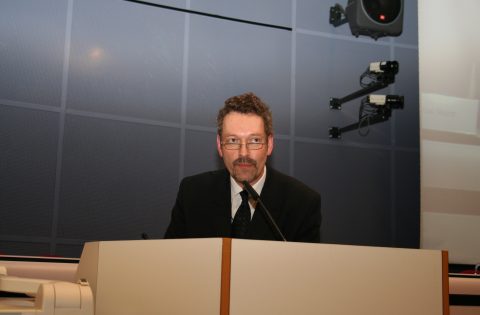The purpose of this note is to provide a brief outline the similarities and differences between the Millennium Development Goals (MDGs) launched in 2000, and the Sustainable Development Goals (SDGs), to be launched in 2015 when the MDGs expire.
(Update 4 December 2014)The Secretary-General has released his Synthesis Report on SDGs, which affirms and strengthens the 17 goals described below).
This note must be somewhat speculative, since the governments will not finalize their agreement on the SDGs until September 2015 at the earliest. However, for the past two years, the general “shape” of the SDGs has remained surprisingly stable.
There are certain key similarities. The UN Secretary-General has mandated that the SDGs not lose the key successful elements of the MDGs – that they were clear, concise, time-bound and measurable.
The first “draft” of the SDGs was created by a High-Level Panel in 2013 (click here) which distinguished “Five Transformative Shifts” that would characterize the SDGs:
The spirit of these transformative shifts has largely been maintained through negotiations by member states in an Open World Group, which released its final report (click here).
At the bottom of this note, I’ve included a shorthand list of the 17 Goals of the current draft of the SDGs.
From the perspective of THP, here is what I see as the Top 10 Differences between the MDGs and the SDGs.
- Zero Goals: The MDG targets for 2015 were set to get us “half way” to the goal of ending hunger and poverty, with similar proportional goals in other fields. The SDGs are designed to finish the job – to get to a statistical “zero” on hunger, poverty, preventable child deaths and other targets. This approach will call for very different strategies: getting “halfway there” encouraged countries to “do the easiest parts first.” Getting to zero requires a real focus on the empowering the poorest and hardest to reach. Much of the impetus and evidence for the success of zero-based goals comes from Brookings Institute, the new World Bank “Zero Poverty” goals, and the second inaugural address of US President Obama.
- Universal Goals: The MDGs were in the context of “rich donors aiding poor recipients.” Since then the world has changed dramatically. Official development assistance (ODA) is now tiny compared to other resources flows, and the majority of the poorest people live in the middle-income countries. Inequality is the issue, not national-level poverty – and this applies to rich and poor countries alike. The SDGs will then be a set of goals applicable to every country.
- More Comprehensive Goals: There were 8 MDGs. The High Level Panel recommended 12 Goals, and the Open Working Group final report recommends 17 “Focus Areas” that go beyond the symptoms of poverty, to issues of peace, stability, human rights and good governance. This will undoubtedly make mobilization around these goals more difficult, but everyone would agree that the complexity of sustainable global development was not fully represented by the MDGs.
- Addressing THP Pillars: While THP celebrated and firmly committed to the MDGs, they largely ignored the three pillars of what we see as crucial for the sustainable end of hunger: empowering women, mobilizing everyone, and partnering with local government. The SDGs address these critical elements (to date) much more effectively, with far stronger gender goals, people’s participation and government “at all levels.”
- Inclusive Goal Setting: The MDGs were created through a top-down process. The SDGs are being created in one of the most inclusive participatory processes the world has ever seen (click here for the diagram) – with face-to-face consultations in more than 100 countries, and millions of citizen inputs on websites. Civil society has been well-organized throughout – coordinated globally through Beyond2015 (click here).
- Distinguishing Hunger and Poverty: In the MDGs, Hunger and Poverty were lumped together in MDG1 – as if solving one would solve the other. So much has been learned about nutrition since that time, and the SDGs treat the issue of poverty separately from Food and Nutrition Security.
- Funding: The MDGs were largely envisioned to be funded by aid flows – which did not materialize. The SDGs put sustainable, inclusive economic development at the core of the strategy, and address the ability of countries to address social challenges largely through improving their own revenue generating capabilities.
- Peace Building: Over the past 15 years, we’ve seen that peaceful, reasonably well governed countries prosper. After 2015, experts predict that the majority of those in extreme poverty will live in conflict-affected states. The inclusion of peace-building is thus critical to the success of ending hunger and poverty — yet was totally ignored in the MDGs. It is controversial in the SDGs, but so far it has remained there.
- Data Revolution: The MDGs said nothing about monitoring, evaluation and accountability – the SDGs target by 2020 to “increase significantly the availability of high-quality, timely and reliable data disaggregated by income, gender, age, race, ethnicity, migratory status, disability, geographic location and other characteristics relevant in national contexts.”
- Quality Education: The MDGs focused on quantity (eg, high enrollment rates) only to see the quality of education decline in many societies. The SDGs represent the first attempt by the world community to focus on the quality of education – of learning – and the role of education in achieving a more humane world: “education for sustainable development and sustainable lifestyles, human rights, gender equality, promotion of a culture of peace and non-violence, global citizenship, and appreciation of cultural diversity and of culture’s contribution to sustainable development.”


